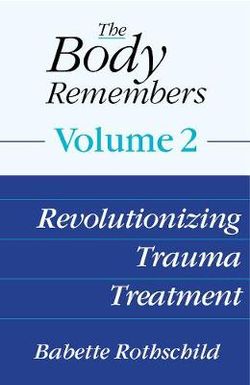The Body Remembers, Volume 2: Revolutionizing Trauma Treatment continues the discussion begun more than fifteen years ago with the publication of the best-selling and beloved The Body Remembers: The Psychophysiology of Trauma and Trauma Treatment.
This new book is grounded in the belief that the most important goal for any trauma treatment is to improve the quality of life of the client. Therefore, the first prerequisite is that the client be reliably stable and feel safe in his or her daily life as well as the therapy situation.
To accomplish this, Babette Rothschild empowers both therapists and clients by expanding trauma treatment options. For clients who prefer not to review memories, or are unable to do so safely, new and expanded strategies and principles for trauma recovery are presented. And for those who wish to avail themselves of more typical trauma memory work, tools to make trauma memory resolution even safer are included.
Being able to monitor and modulate a trauma client's dysregulated nervous system is one of the practitioner's best lines of defense against traumatic hyperarousal going amok--risking such consequences as dissociation and decompensation. Rothschild clarifies and simplifies autonomic nervous system (ANS) understanding and observation with her creation of an original full color table that distinguishes six levels of arousal. Included in this table (and the discussion that accompanies it) is a new and essential distinction between trauma-induced hypoarousal and the low arousal that is caused by lethargy or depression.
The full color ANS table is also available from W.W. Norton as a laminated desk reference and a wall poster suitable for framing so this valuable therapeutic tool will always be at hand.
Principles and theory come alive through multiple demonstration therapy transcripts that illustrate:
- Stabilizing a new client who consistently dissociates due to persistent trauma flashbacks
- Clarifying and keeping therapeutic contracts
- Identifying and implementing hidden somatic resources for stabilization
- Easing transition from Phase 1 to Phase 2 trauma treatment via trauma memory outlining
- Utilizing good memories and somatic markers as antidotes to traumatic memory
Combining an authoritative yet personal voice, Rothschild gives clinicians the space to recognize where they may have made mistakes--by sharing her own!--as well as a road map toward more effective practice in the future. This book is absolutely essential reading for anyone working with those who have experienced trauma.



Share This Book: